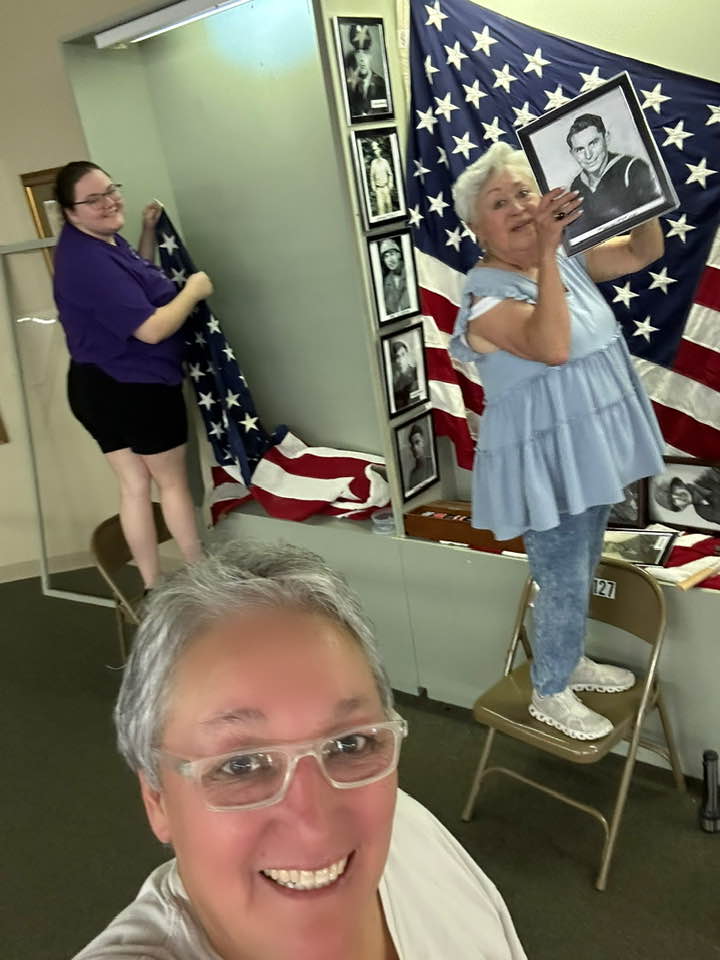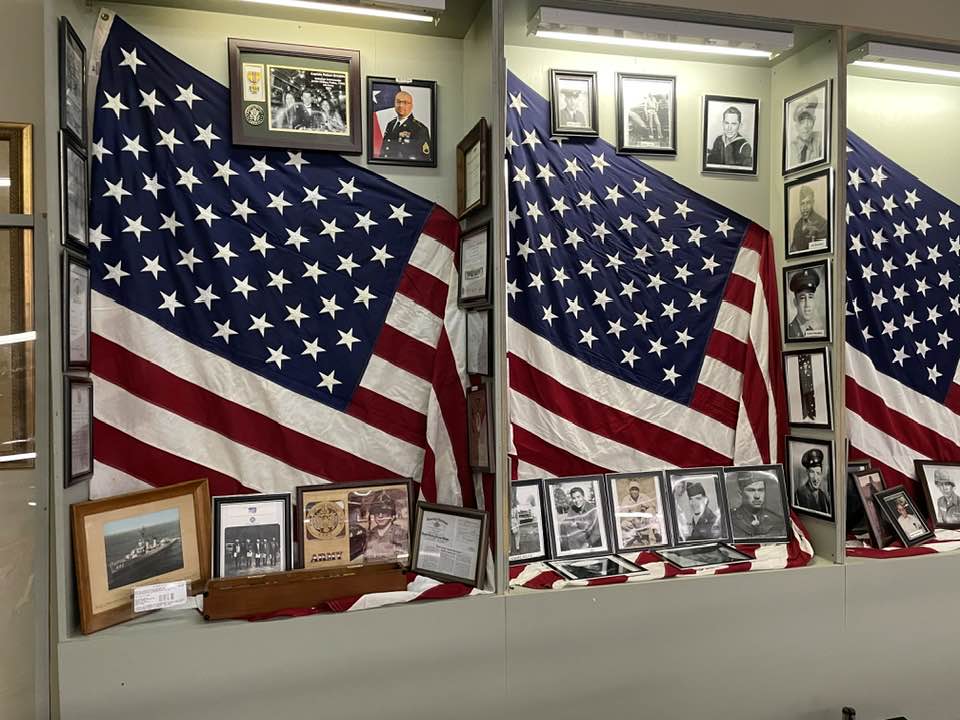Heroes

We have always been a tribe of warriors dedicated to protecting our families and loved ones. Through the ages, many outsiders said we contributed more than our fair share or more than any tribe should, which nearly led to our demise. But it did not. We are still here, proud and flourishing with honor intact. Today, we continue in the military tradition of our ancestors. Over 25% of the men in the tribe have or are currently serving the country we helped create.
Chief John Mark Davis
Epigraph from The Savage’s Creed: Chronicles of the Adai Caddo Warriors, 2025
Our Heroes Serve
Centuries of patriotism
- The Adai Caddo are the oldest and longest serving ally of the Louisiana colony.
- In the 1500s, unlike many other tribes, the Adai Caddo did not attack, enslave, or flee from Cabeza de Vaca (the first European explorer of present-day United States) or the De Soto expedition.
- During the 1600s, as the first French explorers traversed La Louisiane, the strategically located Adai Caddo established trade relations. Trade grew with the founding of Natchitoches in 1714, the first European settlement in Louisiana.
- In 1716, the Adai Caddo requested that the Spanish expedition build a Catholic mission among them. The first mission in Louisiana is built and named for the Adai Caddo (San Miguel de Linares de los Adaes).
- In 1720, 53 Adai Caddo Warriors rescued and nursed back to health the famous explorer Jean-Baptiste Bénard de la Harpe (founder of the first European settlement in North Texas).
- In 1721, the Chief of the Adai Caddo along with over 400 of his people meet with Spanish Governor Marqués de Aguayo during the construction of the presidio, which would become the first capital of Texas and named for the Adai Caddo (Los Adaes).
- In 1731, the Adai Caddo fought alongside the Natchitoches and Los Adaes colonists against the invading Natchez Indians.
- As part of the 1763 Treaty of Paris ending the Seven Years' War (known in the Americas as the French and Indian War), the British, Spanish, Portuguese, French, and their Indian allies redrew the colonial boundaries in the New World. The Adai Caddo are the only Indians shown in the treaty map in the region today known as Sabine, DeSoto, Vernon, Beauregard, and Natchitoches Parishes.
- In 1770, Chief Quemsy is given the Al Merito Medal by the Commandant of Natchitoches on behalf of King Carlos III. Spain recognized Chief Quemsy as the head chief of their staunch ally, the Adai Caddo Indian Nation.
- 1779-1781, the Adai Caddo fought in the successful Galvez Expedition of the American Revolution, which led to the creation of the United States.
- In the 1780 census, the Adai Caddo are listed as 1 of the 8 Indian Nation allies to the colony.
- For the remainder of the 18th century, the Adai Caddo and their Caddo brethren were engaged in battles with the Choctaw Indians. The Americans and other Indians had pushed the Choctaw from their native lands on the East Coast, causing the Choctaw to cross into the lands of the Caddo Confederacy.
- In 1815, the Adai Caddo fought and helped save New Orleans in the War of 1812.
- Throughout the 20th century, Adai Caddo served abroad, fighting to repeatedly liberate their old colonial allies, the Spanish and the French. Recognized for their bravery in combat, the Adai Caddo warriors received combat infantryman badges, distinguished service medals, bronze stars, purple hearts, other U.S. awards, as well as foreign medals for valor.
- The Adai Caddo have served in all branches of the U.S. Armed Forces and fought in the American Revolution and every war since. The tribe has an astonishing military record. Of its current members, 25% of the men have previously or are currently serving in the military. The national average is 6%.
Bravery, Honor, Valor
Museums and memorials
Adai Caddo warriors are honored across the world for their bravery, honor, and valor. Listed below are just a few museums and memorials where you will find the names of these heroes inscribed in stone, brick, or bronze.
- National Museum of the U.S. Army
- Jackson Barracks Military Museum of the Louisiana Militia and National Guard
- Texas Military Forces Museum
- Jajaeam Temple
- Fort Belvoir Path of Remembrance Memorial
- Avoyelles Parish Veteran's Memorial
- Natchitoches Parish Veteran's Memorial
- McLendon-Chisholm Veteran's Memorial
- Golden Triangle Veterans Memorial Park
- Vietnam Veterans Memorial
In Loving Memory
Laid to rest
Many of our Adai Caddo warriors are interred at military cemeteries next to their brothers and sisters in arms.
- Arlington National Cemetery
- St- Mihiel American Cemetery
- Lorraine American Cemetery
- Louisiana National Cemetery
- Alexandria National Cemetery
- Port Hudson National Cemetery
- Baton Rouge National Cemetery
- Northwest Louisiana Veterans Cemetery
- Central Louisiana Veterans Cemetery
- Dallas-Fort Worth National Cemetery
- Houston National Cemetery
- San Antonio National Cemetery
- Fort Bliss National Cemetery
Tomb of the Unknown Soldier
A grateful nation
For those who died and their names or bodies have been lost to time, the Adai Caddo Indian Nation laid a wreath in their honor at the Tomb of the Unknown Soldier during an official ceremony in 2024.
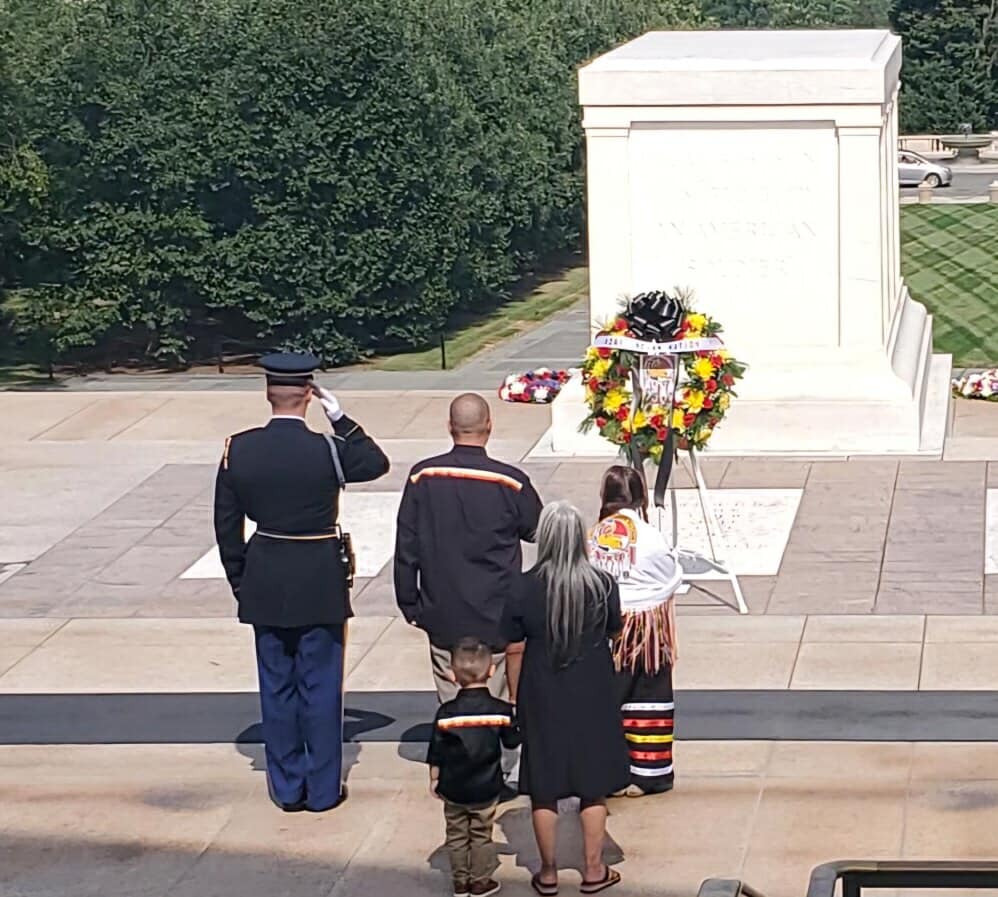
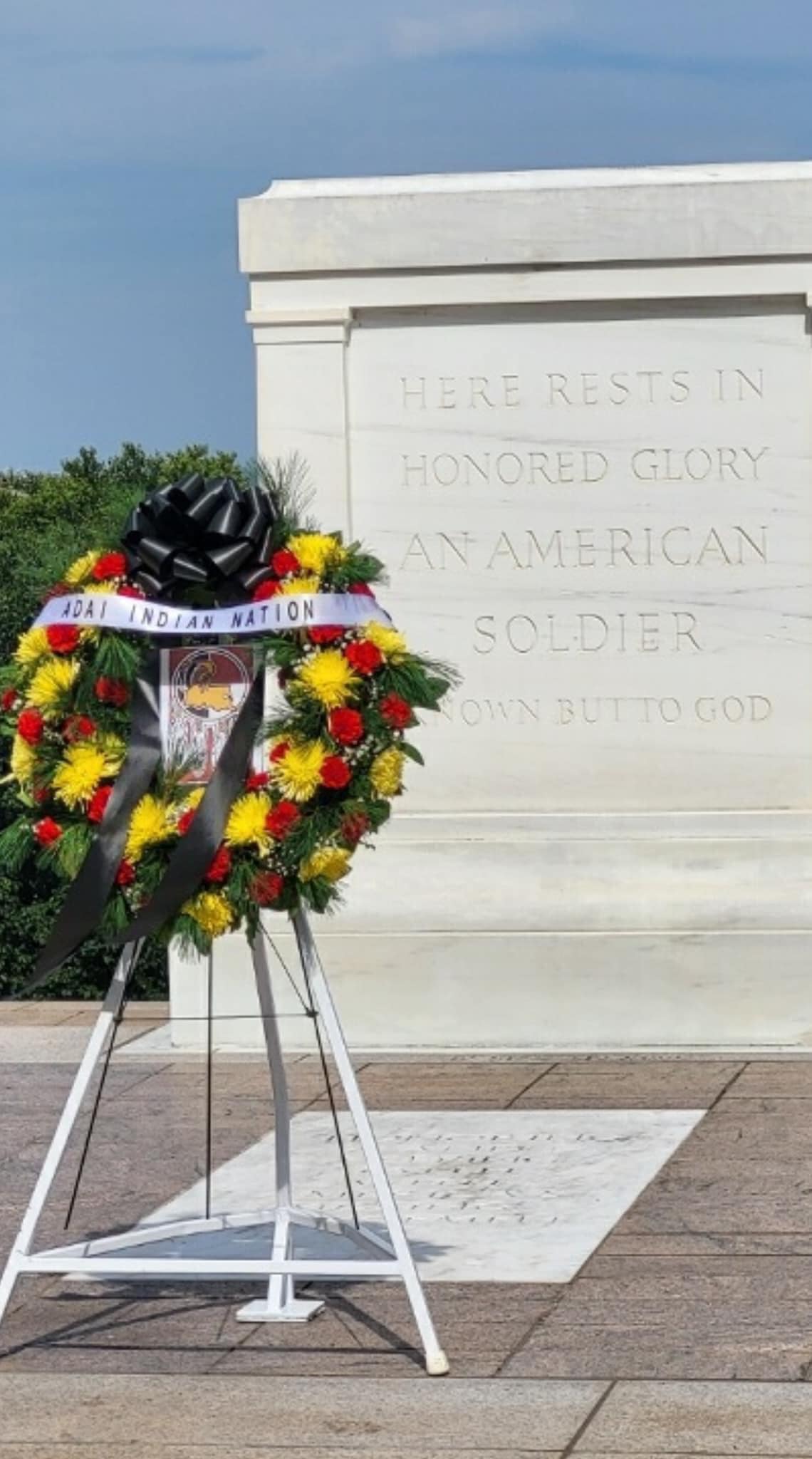
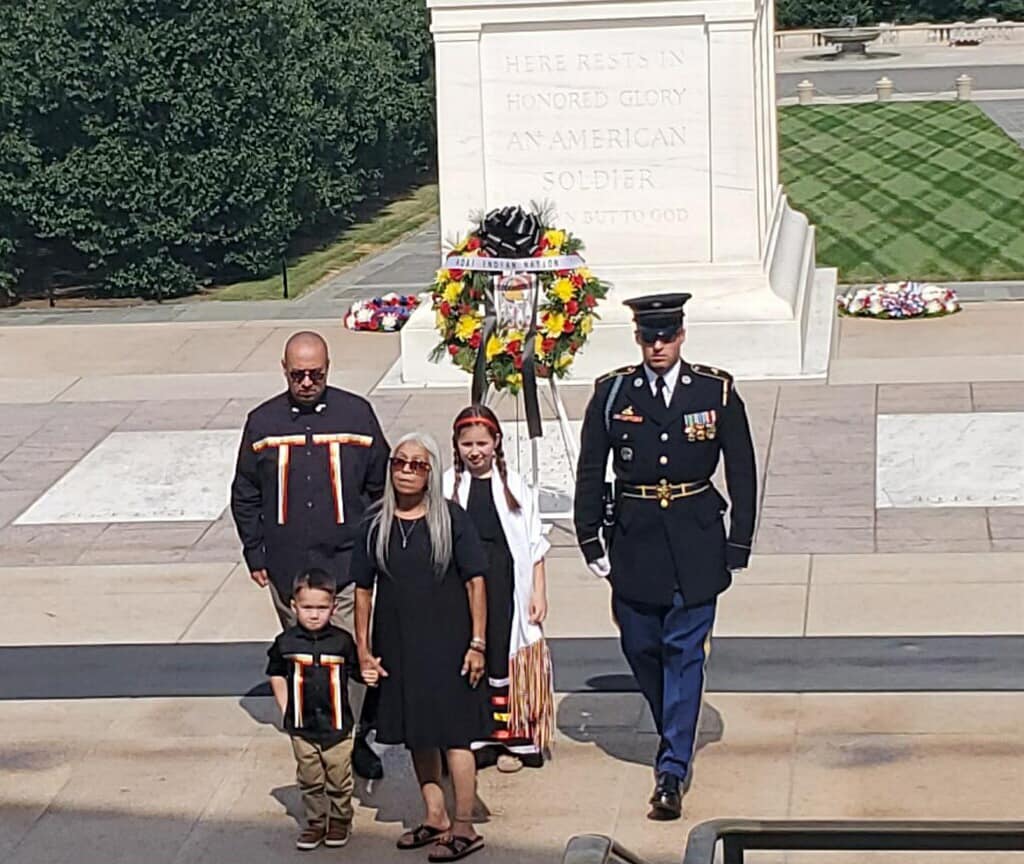
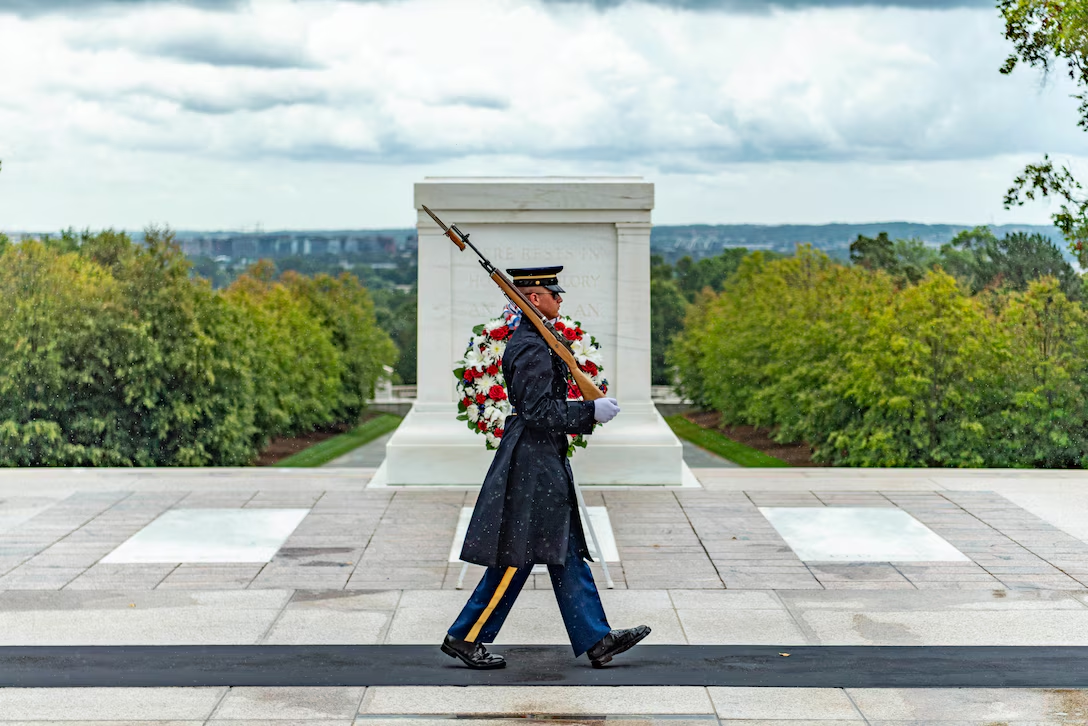
Photos Coming Soon...Adai Caddo Veterans Display at the Cultural Center
